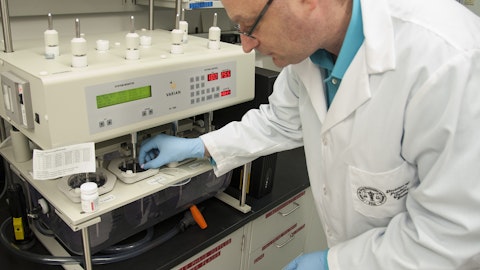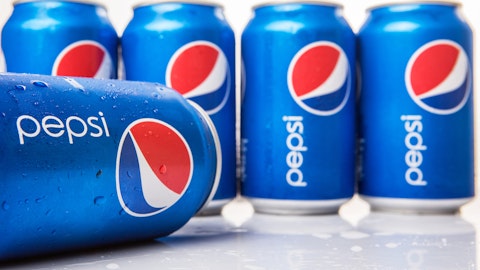General Mills, Inc. (NYSE:GIS)
General Mills, Inc. (NYSE:GIS) offers investors above-average total returns coupled with below average stock price volatility. This is a rare combination. Most low volatility stocks (like many utilities) also have below average total returns.
The company’s stock price volatility over the last decade is just 17.2% – one of the lowest of any business. The company’s low volatility is a reflection of its low risk business model.
General Mills is the industry leader in packaged and processed food. The company has a market cap of $36 billion.
The company’s market leadership comes an especially slow changing industry. In many industries (think technology) creative destruction rapidly cycles through business. Most of the large technology companies of just 20 years ago are nowhere near the level of market share they had at that time. Contrast this to packaged and processed foods. People have eaten packaged foods for a very long time – and there appears to be no end in sight. Better packaging and speed-to-market may enhance packaged foods, but the industry as a whole will likely be relatively unchanged 20 years from now.
The stability of the industry is exemplified in General Mills’ amazing dividend history. The company has paid dividends for… 116 years.
Over the last decade General Mills, Inc. (NYSE:GIS) has grown earnings-per-share at 7.8% a year. The company consistently grows earnings through organic growth, acquisitions, efficiency improvements, and share repurchases. I expect General Mills to continue growing earnings-per-share at 7% to 9% a year over the next several years. This growth combined with the company’s current 3.10% dividend yield gives investors expected total returns of 10% to 12% a year – not bad for a low volatility, low risk business that makes staying the course easy.
Follow General Mills Inc (NYSE:GIS)
Follow General Mills Inc (NYSE:GIS)
PepsiCo, Inc. (NYSE:PEP)
PepsiCo, Inc. (NYSE:PEP) is one of the most well-known businesses around. The company has increased its dividend payments for 43 consecutive years. This is clear evidence of stability and a strong competitive advantage.
The reason PepsiCo is on this list and not its rival The Coca-Cola Co (NYSE:KO) is because PepsiCo actually has a lower stock price standard deviation over the last decade than Coca-Cola. Coca-Cola is strictly a beverage business, whereas PepsiCo is more diversified.
PepsiCo owns the Quaker and Frito-Lay brands. The Frito-Lay brands in particular are very valuable. PepsiCo actually generates more operating profit from food products than from beverages.
The split business model of PepsiCo makes it slightly more stable than Coca-Cola. This is reflected in the company’s 10 year annualized stock price standard deviation of 17.5%, versus 18.6% for Coca-Cola.
PepsiCo’s growth over the last decade has been below investor expectations. The company has grown earnings-per-share at just 4.7% a year over the last decade.
I expect growth to pick up at PepsiCo over the next decade. The company should be able to compound earnings-per-share at 5.5% to 9% a year from the following sources:
– Share repurchases of 1.5% a year
– Margin expansion of 1.5% to 3% a year
– Revenue growth of 2.5% to 4.5% a year
Revenue growth for PepsiCo will come from a mix of increased international expansion and bolt-on acquisitions. The company spends around $4 billion a year on advertising. This advertising budget allows PepsiCo, Inc. (NYSE:PEP) to quickly scale new, existing, or acquired brands.
In addition, investors will benefit from the company’s current 3% dividend yield. The company’s dividend yield combined with its expected earnings-per-share growth rate gives investors expected total returns of 8.3% to 11.8% a year.
Follow Pepsico Inc (NASDAQ:PEP)
Follow Pepsico Inc (NASDAQ:PEP)
Final Thoughts
The preferred method of dealing with stock price volatility is to understand that stock price fluctuations do not change your dividend income or your fractional percentage of ownership in a business. They are merely ‘noise’ on your dividend growth journey.
With that said, investing in high quality, low volatility dividend growth stocks makes stock price moves less severe. This can make ‘staying the course’ easier for dividend growth investors. The 3 businesses in this article are among the highest quality around. All 3 offer above average dividend yields and will very likely continue increasing their dividends far into the future, while providing a ‘smoother ride’ thanks to their low stock price volatility.
Disclosure: None
Additional Links:
(1) http://www.suredividend.com/get-top-10-dgi/
(2) http://www.dividendgrowthinvestor.com/2015/05/johnson-johnson-jnj-quality-dividend.html





